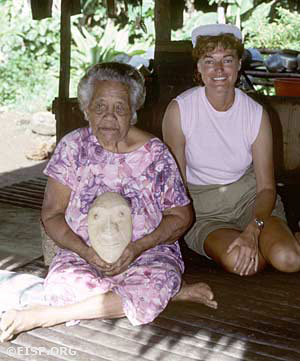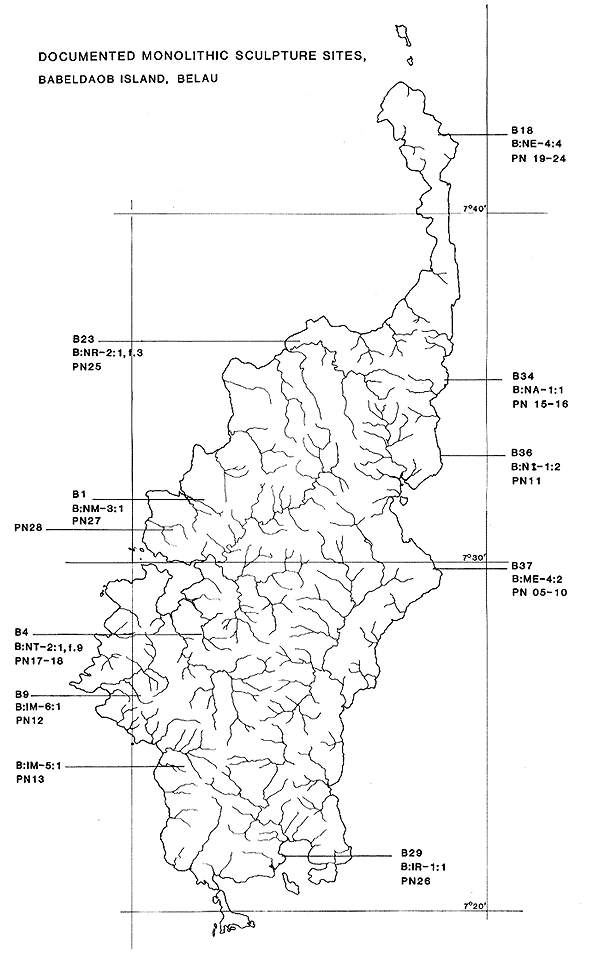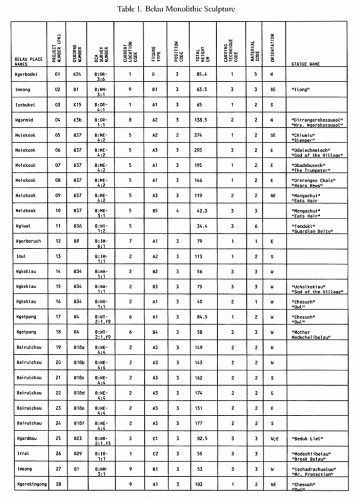Comparative studies across Polynesian cultures add insight into the development of Rapa Nui culture
Fieldwork on the Islands of Oreor and Babeldaob, Republic of Belau (Palau), Micronesia, 1987

Jo Anne Van Tilburg and an elder of the Babelblai family of Ngiwal. ©1987 EISP/JVT/ Photo: D. C. Ochsner
In 1987 we were drawn to Belau by a statue described by archaeologist Douglas Osborne, who had worked there in the 1960s, as “strikingly like those of Easter Island.” Although he said it was “more conventionalized” and “less naturalistic” than Easter Island sculpture, the possibility that it resembled moai was intriguing, and we undertook eight weeks of intensive field survey work in the Republic of Belau (Palau). Our intent was to collect data on the formal and stylistic qualities of the statue Osborne had described, and then to record any others we might find. The aim was to gather enough data to constitute one component of a comparative study of Pacific monolithic stone sculpture.
Stone statues or monuments in Belau are one of ten elements that define Level 1, a “village settlement system” of a two level settlement system research model. Archaeologists conducting island-wide surveys have classified artifacts, areas, or features into three categories: discrete portable objects (potsherds, chipped and ground stone); discrete non-portable features (platforms, statues, uprights); and non-discrete, non-portable areas (terraces). [Read More…]
Palau Statue Survey Map & Data Table: 1987

Location of monolithic sculpture sites recorded during our 1987 fieldwork on Babeldaob island, Republic of Belau, Micronesia.

Table listing twenty-eight stone monoliths recorded during our 1987 fieldwork in Belau, Micronesia. Project number 27 was said to resemble Easter Island sculpture.
School of the Pacific Islands in Republic of Belau (Palau)
Most scholars and fieldworkers have reported that Belauans today have very little interest in the monolithic stone carvings and that, in the opinions of many islanders, foreigners surely must have carved them. The experience we had with the Belau Monolithic Sculpture Project in 1987, however, told us something quite different. We found that many Belauans had a profound interest in the carvings as a valued part of their cultural heritage. We were also convinced that some of the carvings were still valued as sacred objects in several of the more remote villages.
 English
English  Español
Español